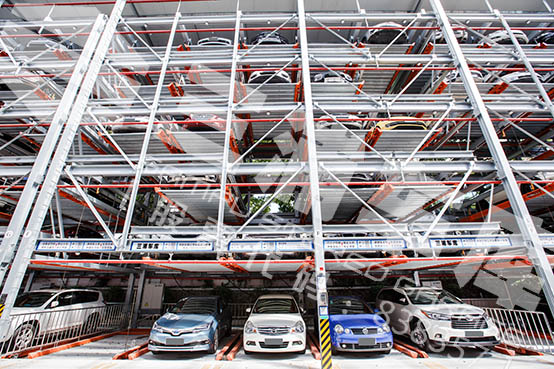
- Home
- Profile of Sampu
- Garage type
- Classic cases
- Manufacturing strength
- News and information
- Contact us
Compared with traditional parking lots, the emergence of multi-level parking lots seems refreshing. It can increase the parking capacity by multiples within the unit area. Its operation and management efficiency is relatively high, not only can it increase the capacity of parking spaces but also significantly reduce construction costs. Currently, the comprehensive operating cost of intelligent management is less than half of that of traditional parking lots. So, what makes it better than traditional parking lots?

One, easy access without the need to reverse
Traditional parking lots require testing reverse parking skills when accessing and retrieving vehicles. And if the vehicles are crowded within the flat parking lot, reversing is extremely time-consuming. However, multi-level parking lots do not have to worry about such problems. After the upper parking space rotates 90 degrees, the car platform drops to the road surface, and the access and retrieval of vehicles can be done directly without the hassle of reversing.
Two, high safety
The equipment is equipped with a full-range anti-falling and static anti-falling device, and highly reputable multi-level parking lots have very reliable safety. However, for flat parking lots, personnel need to be stationed. Although some high-end residential areas and commercial properties have security protection facilities, there is no perfect safety facility for multi-level parking lots to park luxury cars. Each parking space operates independently, so even if one parking space fails, it does not affect the use of other parking spaces. Therefore, the overall failure rate of the parking spaces is low, while regular maintenance is needed for ordinary multi-level parking lots.
Three, small footprint and strong adaptability of the site
Ordinary parking lots need to carefully consider the parking space planning, but reliable multi-level parking lots are more flexible. It can directly increase parking equipment on existing parking spaces, and can also transform various scattered spaces such as both sides of the road, green spaces in front and back of buildings, or under trees, etc. Therefore, multi-level parking lots can be applied in various places, improving space utilization. Compared with creating parking spaces and traditional garages, it can increase more than double the parking spaces, without the need for a reserve turnover space, truly achieving a 1+1 increase in parking spaces.
In addition, traditional parking lots have relatively high requirements for drivers. Due to the need for static supervision through a large number of video surveillance equipment, even if there is a scrape on the vehicle, it can be traced back through video data, but the problem-solving efficiency is relatively slow. Affordable multi-level parking lots avoid vehicle scrapes and are more convenient and efficient for retrospective analysis.